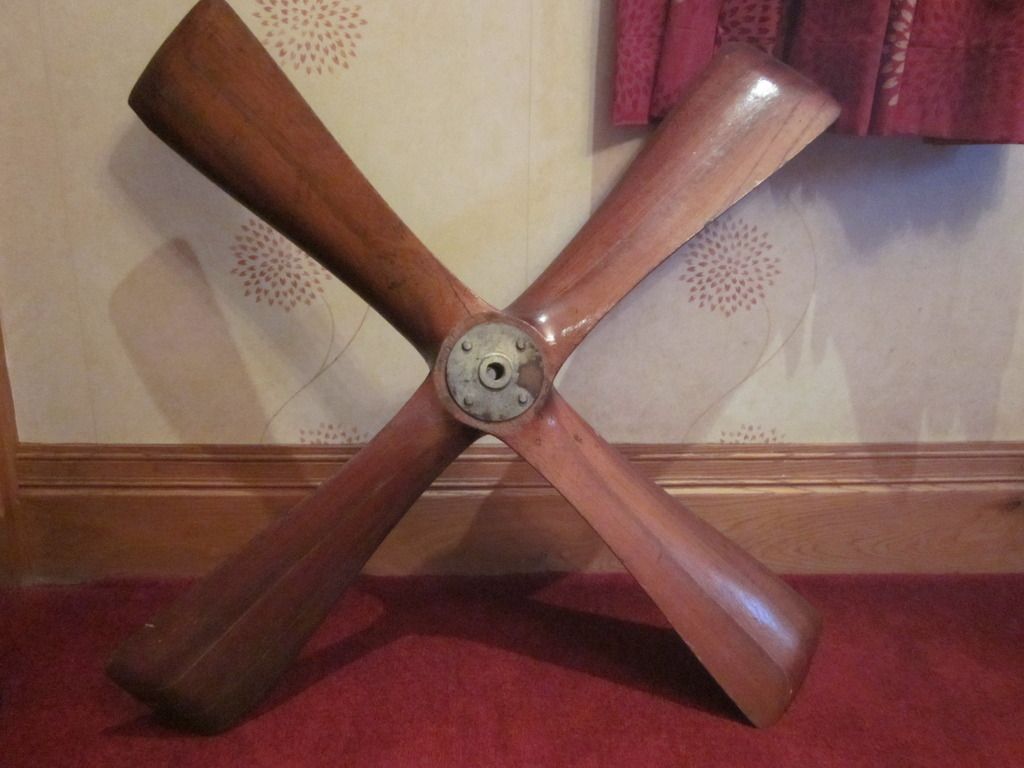Hello All
I have a 4 blade propeller that I am looking to sell, but wanted to find out more about it.
I have spent most of the afternoon looking through this forum and am seriously impressed with the level of knowledge.
I am a little clearer about what I have, but decided to take the plunge and ask the experts what it is and hopefully an indication of its value.
I believe it is a Target Towing plane winch propeller.
The DRG number is T29505/2 but there is also the number 3899 stamped next to it as well.
Thanks in anticipation.
Licia

I have a 4 blade propeller that I am looking to sell, but wanted to find out more about it.
I have spent most of the afternoon looking through this forum and am seriously impressed with the level of knowledge.
I am a little clearer about what I have, but decided to take the plunge and ask the experts what it is and hopefully an indication of its value.
I believe it is a Target Towing plane winch propeller.
The DRG number is T29505/2 but there is also the number 3899 stamped next to it as well.
Thanks in anticipation.
Licia

Comment